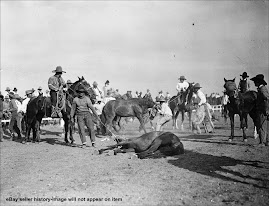As if things aren't bad enough, the BLM just finished a removal just west of Death Valley. The population of the wild burros is at a staggeringly low number already, just under 3000 nationwide, and the removal took 239 more from the range. In 1974 the population of burros on the range was at around 14,000 on 54 HAs, but the BLM began a systematic removal process. By 2000 the burros had lost over 4 million acres, or 45% of their range and 80% of their population. The goal in 2000 was to acheive a population of 2750 by 2005, but they have gone further than even that plan. This latest removal is part of the BLM plan to reduce the burro numbers to a few herds and a population of 2000.
Then one must look at what happened during the removal. While the media was onsite the BLM contractor flew the helicopter VERY close to the burros. In fact according to the contractor and BLM the helicopter may have even touched the burro to "nudge" it.
Photo by Kurt Miller -Wild Burro Roundup 9-28-09
It is possible that this happened at least twice. A few years ago the BLM used to put the procedures for rounding up horses and burros into the EA. These procedures stated that at no time should a helicopter press the animals until they are getting close to the trap. It also states that the helicopter should not press females with babies. Not to mention does anyone remember the whole helicopter crash at the Roosevelt National Park when the pilot decided to use the skids to close a gate behind horses? It simply isn't safe to "nudge" any animal with the skids, not for the animal, not for the pilot and not for the ground crew. How stupid can they be? Of course nobody accused them of being smart.
One thing that advocates may notice is that the BLM is constantly trying to get the horse population down to the size that it was in 1971/1974 when the animals were in danger of becoming extinct. Now they are claiming that those numbers aren't good enough for the burros and that they must be at a LOWER population than in the 1974 census. It is impossible to know how many horses or burros there were in 1971. There was an estimate, but later the "experts" admitted that the number estimated may have been well below the number actually on the range. Funny how the same issues haunt the BLM. They couldn't tell us how many were on the range then or now. They withdraw lands from the program without authority, except the one they have given themselves. They say they are taking the public's comments, but sign decisions within hours or days of the end of the commenting period so there is no way they reviewed, let alone considered, them. They put thousands of horses into holding facilities at a cost of millions a year and round up more to put there. The cost of the removals is about $7000 per horse.
The sad thing is that the animals are paying the price for the absolute fiasco.
It is past time for the Congress to demand a complete investigation into the BLM's administration of the wild horse and burro program. It is past time for the ROAM Act to pass Congress. We need everyone to call their Senators and ask for an investigation and a moratorium on removals and withdrawal of any land from the program until that happens. While calling you should ask your Senators for an INDEPENDENT census of the wild horses and burros and for their support of the passage of the ROAM Act HR 1018/S 1579.



